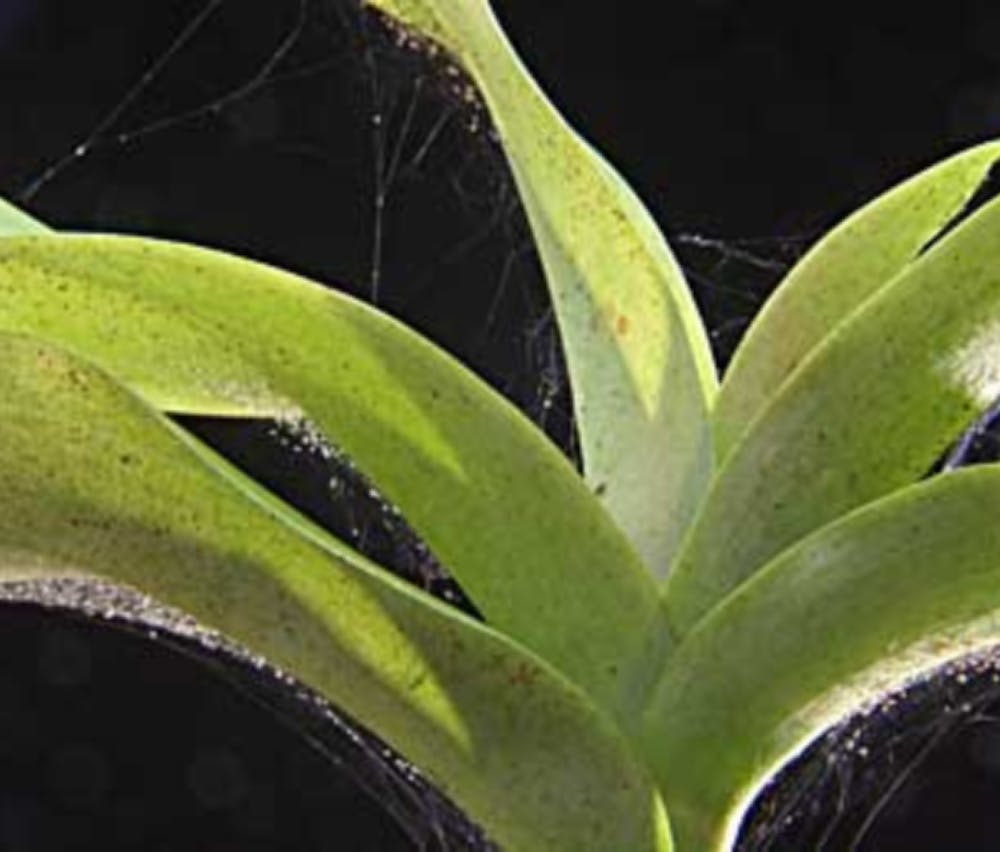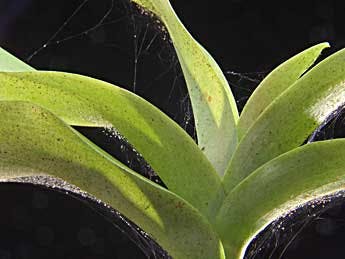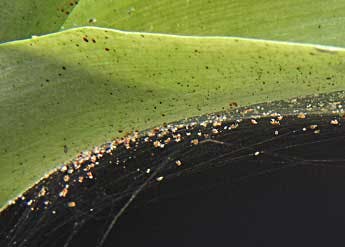
Mites


Gallery


Additional Information
Bad mites, such as spider mites, are quite destructive and are very easily missed, as they are so small. They feed by cutting open individual plant cells, and drinking the cellular guts. This mode of feeding means that they are impervious to systemic insecticides, and must be treated with contact insecticides, or IGRs. The entire life cycle from egg to adult depends on temperature and can range from 40 days at 55°F to 5 days at 75°F.
Again, in room temperature or hotter conditions, spider mites can complete a life cycle in as little as five days, and females can lay up to 200 eggs at a time!! This makes them rather problematic, especially at blooming time, or during times of new growth. Spider mites, like any creature, prefer an easy meal, so because they slice open individual cells, spider mites prefer thin-leafed orchids. They are much less common on thicker, more succulent orchids like Cattleya except for the flowers, which are susceptible to all. Spider mites are attracted to bright colors, especially yellow, and gravitate towards the sunniest part of the plant. This may be so that they can ride wind currents better from plant to plant. Spider mites easily can get on your clothes and can hitch a ride – but don’t worry, they do not bite. You might be, however, transferring them from plant to plant, if you have an infestation and don’t shake your shirt out between plants.
The telltale signs of spider mites are fine, silky webbing (not to be confused with regular good spider webbings which are more fishnet-style rather than fine silken cloth), and pale markings that look like pointillism (someone poked the leaf with many pale white/grey dots), as well as occasionally their fras which looks like black dots.
Spider mites can be controlled best by insecticidal soaps, or with predatory mites. Amblyseius cucumeris predatory mites are just one of many mites you can use. We recommend multiple applications of pesticides to control spider mites. If using beneficial insects to control mite populations, do not spray insecticide at the same time. Indoors, it is possible to eradicate them. Typically 3-4 applications of pesticide with intervals of a few days will do the trick. Additionally, indoors, they can be controlled by either insecticidal soap or predatory mites! Predatory mites are small just like the mites that they eat, so if you were to release them in your apartment for spider mite control, they would exhaust their food supply, and either leave or die and turn into dust – no bodies to clean up!
In many greenhouses, mites are controlled with sprays, typically ranging from the more safe insecticidal soaps to the hardcore chemical sprays. Outdoors/in greenhouses, you will need to spray regularly as part of an IPM program (See here, here, and especially here for more information). Spider mites are impervious to systemic pesticides, as they never drink phloem sap, so are never exposed. In a non-spray greenhouse or low spray greenhouse, mites can be controlled with predatory mites.
For more information on Mites, see:
- University of Wisconsin Madison Extension, Mite Management https://hort.extension.wisc.edu/articles/mighty-mites/
- University of Wisconsin Madison Extension, Mite Management https://hort.extension.wisc.edu/articles/managing-mites-greenhouses/
- Comprehensive guide: University of Florida Extension https://edis.ifas.ufl.edu/publication/IN307
- University of Florida Extension https://mrec.ifas.ufl.edu/lso/SCOUT/entomology.htm
- Comprehensive guide: University of California Agriculture and Natural Resources http://ipm.ucanr.edu/PMG/invertebrates/links.mites.html
Further Reading
[1] University of California Agriculture and Natural Resources http://ipm.ucanr.edu/PMG/PESTNOTES/pn7405.html
[2] Rutgers University Cooperative Extension https://njaes.rutgers.edu/pubs/publication.php?pid=fs235

FREE ACCESS: Orchid DealWire
Get notified when orchid vendors have special promotions and exclusive savings.







